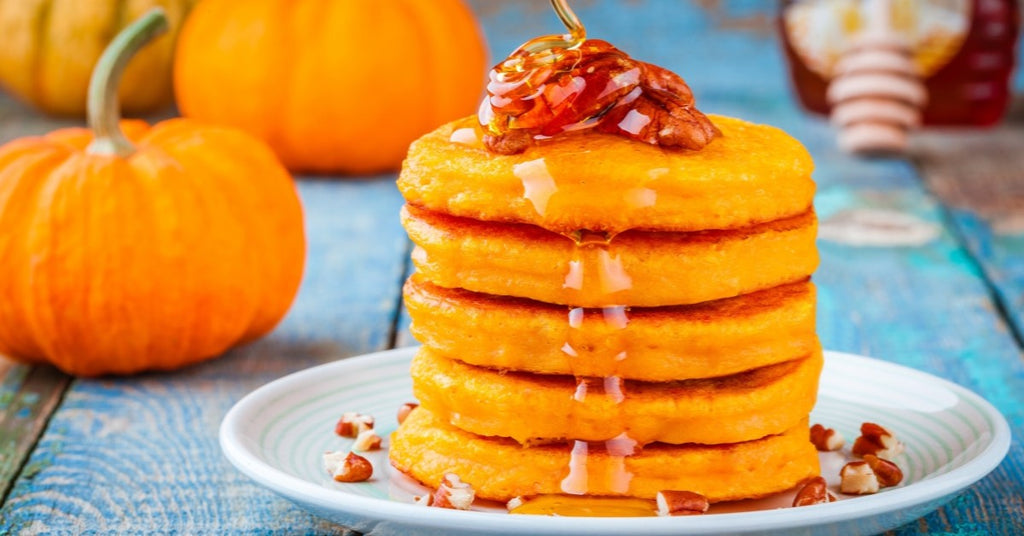
If you have kids and you eat a lot of pancakes, you’ve inevitably encountered the question of where does maple syrup come from. Outside of the stock answer “maple trees,” that’s where most parents leave it at.
Brookfield Maple Products makes the best maple syrup, maple cream, and maple caramels. On our Pennsylvania maple syrup farm, we make all of our maple products from the sap we harvest on our farm. What began as a hobby is now our business, and we are over-the-top proud to be certified organic. Continue reading below for the full answer to where does maple syrup come from, and then visit us online today!
WHERE DOES MAPLE SYRUP COME FROM?
Maple syrup comes from the sap of sugar maples, red maples or black maple trees primarily, although other types of maple trees can produce sap that we collect as well. In cold climates, these trees store starch in their trunks and roots, which is then converted into sugar that is pushed through the tree as food for the tree to sprout its leaves in the spring. This rising of the sap is when sap is best collected. Holes are typically drilled into the maple trees to collect the sap, which is heated to remove the water content before it is processed into syrup.
The whole process of a maple tree producing sap in itself is fascinating. As winter approaches, the maple tree (like all deciduous trees) stops growing. It begins to store starches throughout its sapwood, especially in the xylem layer of the tree. These starches remain stored until the outside temperature reaches 40 degrees Fahrenheit outside. That signals the tree that spring is coming, so the starches are then transformed into sugar, which passes into the sap. The temperature increase creates pressure in the tree, which causes the sap to flow. Thus, when the tree is tapped, sap begins to drip as a hole is created in the wood fibers. This is when sap can be collected.
However, this window is incredibly short. The reason being is that when the outside temperature reaches 45 degrees, sugar is no longer produced by the tree. The sap flow may continue, but it will be poor quality with no sugar in it. Once the buds on trees swell and start to break out, sap flow ceases completely, and it is no longer possible to collect sap at all. It’s best to collect sap after a night of below freezing temperatures and sustained days of the back and forth between freezing and below 45 degrees during the day.
It takes about 40 gallons of sap to make one gallon of maple syrup because sap is 98% water. All of this water is boiled off, leaving behind the rich goodness we know and love as syrup. If the syrup is boiled down even more, you’ll get maple sugar.
The best place to tap a tree is about two to three feet above ground, especially if you are using buckets. The taphole itself should be about two to two and one-half inches into the tree at an upward angle so the tap can flow easier. When tapping a tree that already has been tapped, you need to ensure the new taphole is at least six inches away to the side and 24 inches vertically from the old one in order to make sure you are tapping fresh, productive sapwood. Tap holes should be distributed around the tree. Trees themselves cover the hole you made with new bark.

DOES TAKING SAP HARM A MAPLE TREE?
Taking sap from a maple tree does not harm them. They survive just fine and continue to produce. Sometimes maple trees are given a year off is they appear stressed, but for the most part, they grow every year and are healthy. With all of this new technology, however, more sap is being taken from trees. Researchers have investigated this and concluded that the trees are still doing fine. Some scientists speculate that the trees produce more to make up for it, but that has yet to be determined. The fact of the matter is that taking of sap is extremely difficult to gauge the impact on a tree. After all, the maple tree doesn’t tell us how it feels. Hence, we only have to go off how the tree does year after year. Hence, most scientists liken tapping a sugar tree to donating blood — your body and the tree just replaces what is taken and moves on with its life.
THE BROOKFIELD MAPLE PRODUCTS DIFFERENCE
Brookfield Maple Products is the best maple syrup farm in Pennsylvania. We collect sap from our maple trees and turn it into the most delectable edibles around. From homemade maple syrup to maple hard candies, we take pride in our all certified organic maple products. We are also a Lapierre maple equipment dealer, which are the products we use in our maple farm business. From tubing to fittings and extractors, we have everything you need to produce your own maple products. Visit us online today!
